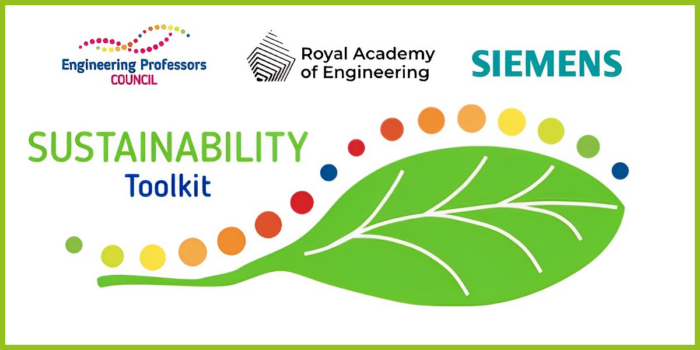 Theme: Collaborating with industry for teaching and learning, Graduate employability and recruitment
Theme: Collaborating with industry for teaching and learning, Graduate employability and recruitment
Author: James Ford (University College London)
Keywords: Civil Engineering Design, Building Information Modelling, BIM, Digital Engineering, Industry, Collaboration
Abstract: This project, developed jointly with industry partners at Multiplex, allowed Civil Engineering students at UCL to develop their understanding and technical skills around the use of Building Information Modelling (BIM) on civil engineering projects and related software. Students worked on a model of an emergency shelter (designed by UCL alumnus) and were required to consider the relevant parties involved (technical and non-technical), the information they require and how to utilise the model to organise and communicate this information effectively.
Background
Digital engineering tools and Building Information Modelling (BIM) are increasingly becoming important features of modern construction projects. The design teaching team in the Department of Civil, Environmental and Geomatic Engineering (CEGE) at University College London (UCL) recognised the need to embed this practice into parts of the design teaching delivery for students on the Civil Engineering undergraduate programmes.
UCL and Mulitplex (civil engineering contractor) had been partnering on school outreach activities for several years. A discussion at such an event led to a realisation that there was good alignment on how these topics should be taught, with a focus on information and communication rather than modelling. Staff at UCL had already started developing a project that would involve using elements of BIM in the design development of an emergency shelter for humanitarian relief and that the project should encourage students to think about the information and communication aspects of this. The digital engineering team at Multiplex then agreed to join the project and provide technical assistance, to develop and deliver teaching materials and to provide real life examples and case studies to supplement the project.
The Brief
Students were provided with a pre-developed REVIT® model of an emergency shelter design made, predominantly, from timber. The shelter had been designed by a UCL alumnus during their time as a UCL student and agreement was granted to use it for this project. Students were presented with an imagined scenario that they were working for a charity that was planning to build 10 of these shelters in Haiti to assist with humanitarian relief effort following an earthquake. The students needed to consider which parties would need to be communicated with, what information they would need, how this information could be communicated with them and how the digital model could assist with this process.

Figure 1. Image of Emergency Shelter model in REVIT®
Students were encouraged to consider (but not limited to) included:
- Design information (limits, assumptions, etc)
- Commercial
- Construction (programme, logistics and sequencing)
- Health and safety
- Environmental factors
- Handover information and future maintenance requirements
Students were required to research the relevant information and populate the REVIT® model appropriately and professionally.
Requirements
Teams (of 6) were required to provide a 10xA3 page report that would run through each of the potential parties to communicated with, what information they would need and how the model would be used to enable this communication. They also needed to describe any assumptions that were made and how information was selected during the research phase. They needed to highlight the critical thinking that had been carried out in relation to sources of information and its suitability and reliability.

Figure 2. Use of model to explain construction sequence
Teams also needed to submit their completed REVIT® model files for inspection as well as an 8 min video presentation that would:
- Present the completed model and show competency in finding the relevant information for different elements
- Showcase how the model enhanced communication to each of the relevant parties
- Explain how the team collaborated to produce a justified proposal
- Discuss problems encountered and how they were overcome

Figure 3. External view of model
Delivery
Course material was delivered over 4 sessions with a final session for presentations:
Session 1: Project introduction and software introduction
Session 2: (i) Information and exporting in REVIT®. (ii) Commercial overview
Session 3: (i) Construction and Logistics. (ii) Health, safety and environmental factors
Session 4: (i) Handover requirements. (ii) Maintainable assets. (iii) Building management
Session 5: Student presentations
Sessions were co-designed and delivered by a UCL academic and a digital manager from Multiplex. The sessions involved a mixture of elements incl. taught, tutorial and workshop time that allowed students to work in their groups.
Learning / Skills Development
The project aimed to develop skills and learning in the following areas:
- Improve REVIT® / software skills
- Understand the benefits of BIM to a multi-party construction project particularly in relation to information and communication.
- Improve construction knowledge
- Recognise that digital technology isn’t a replacement for engineering knowledge and input.
- Improve employability of students by equipping them with relevant and up-to-date construction tools and techniques.
Benefits of Collaborating
The first benefit was the inspirational aspect of working on a shelter design that had been produced by a former UCL student. This Alumnus contributed to the introduction session by running through their design and this helped students understand just how much had been achieved by someone in their position.
The collaboration with Multiplex’s digital team brought obvious benefits to the technical skills development but also benefitted student understanding by showing how these skills are being used on live construction sites. The process of learning from and presenting to practicing construction professionals also allowed students to develop key professional behavioural skills that help develop and enhance employability.
Reflections and Feedback
Reflections and feedback from all staff involved was that the work produced was of a high quality and that this demonstrated an understanding of the project objectives from the student perspective. It was also apparent that students were becoming adept at using REVIT® software effectively and appropriately.
Wider feedback from students in the module review was very positive about the project and that it had improved their understanding of the role of digital technologies in the construction industry. Students said in feedback “BIM has helped us to look at all aspects of the design and to figure out more stuff in the same amount of time,” and, “Doing it this way [REVIT model] means you can see what you think might be a risk to the workers more easily.”
Several students posted positively about the project on their LinkedIn profiles, possibly suggesting a link between the project and employability in the minds of the students.
2 of the students successfully applied for summer internships with Multiplex’s digital team immediately following the project and were able to build on their digital engineering skills further.
The project was featured by trade magazine BIMPlus which ran an article on the project showcasing the relative novelty and uniqueness of the approach taken.
Any views, thoughts, and opinions expressed herein are solely that of the author(s) and do not necessarily reflect the views, opinions, policies, or position of the Engineering Professors’ Council or the Toolkit sponsors and supporters.




